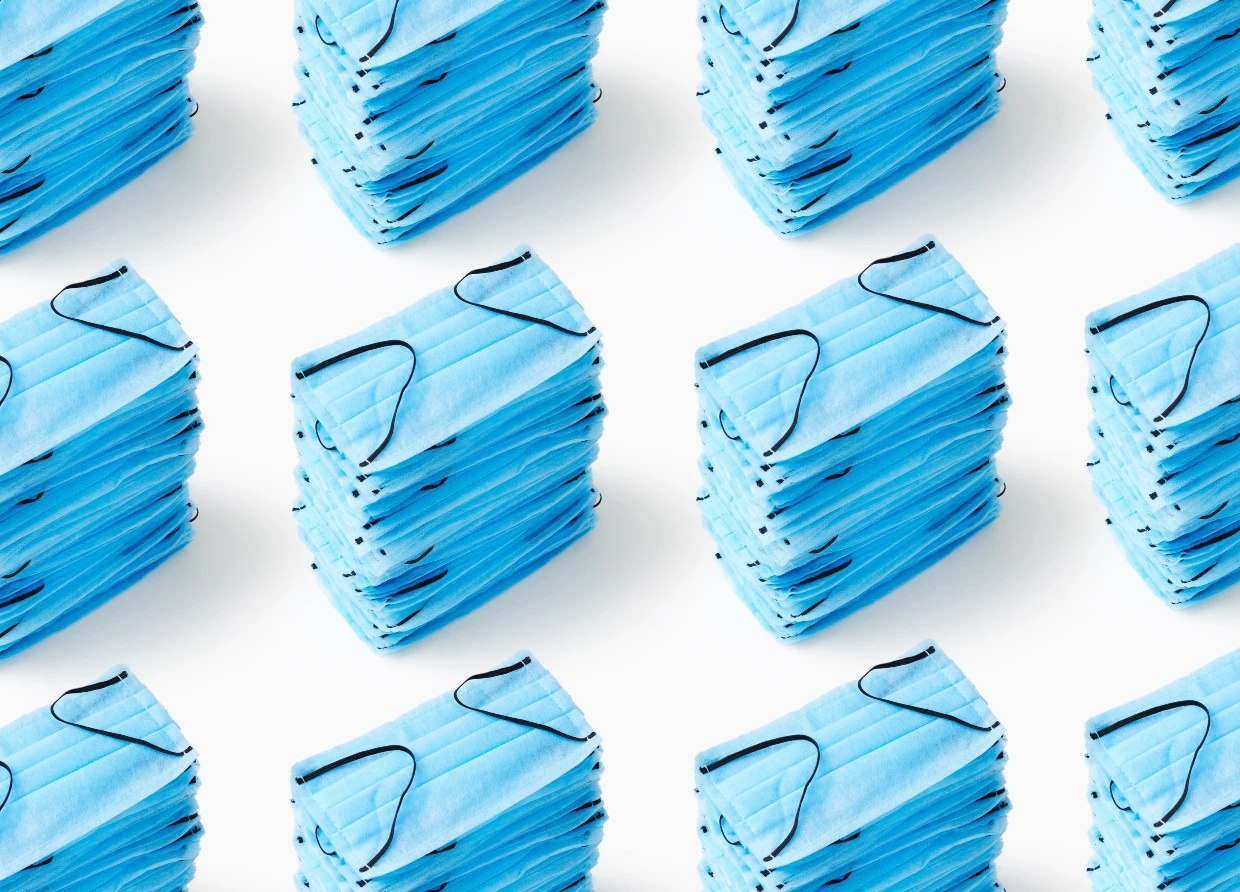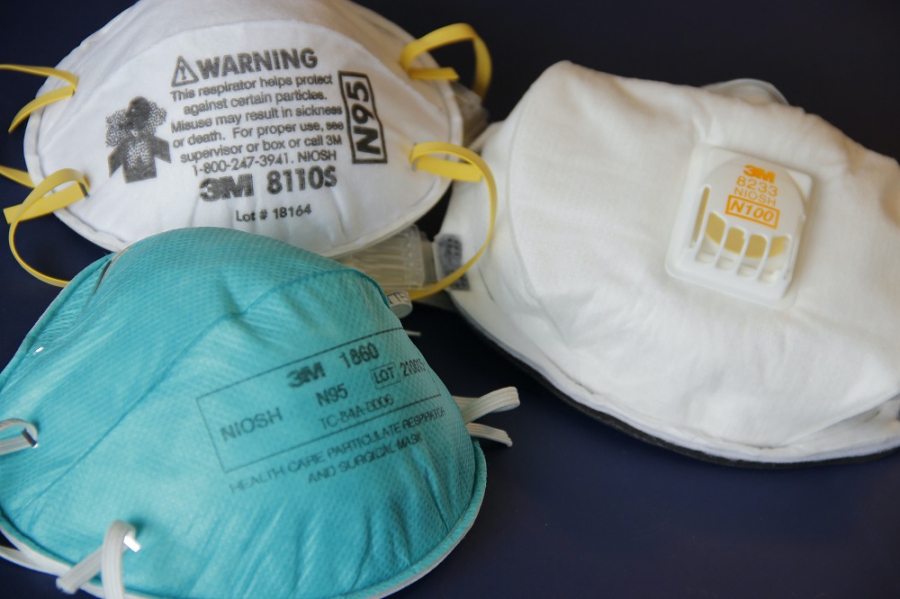6 TYPES OF MASKS: HOW EFFECTIVE THEY ARE AND WHICH ONE TO CHOOSE
You need a good and suitable mask to wear in this pandemic, here is a guide on knowing which one is the best.

Since the novel coronavirus (Covid-19) pandemic emerged in China in late 2019, it has rapidly spread throughout the world.
Many things that can be done to prevent the spread of this virus. Mobility restrictions, social distancing, self-isolation, and vaccinations are just a few examples.
But, there is one step that could be considered the most significant of all. If you don't take this step, all of your efforts to combat the virus will be for nothing. The step is to wear a proper face mask.
In this pandemic, wearing a face mask is essential. You must wear a face mask whenever you go, whether to the office, the park or even merely to go shopping in a nearby store.
Before the pandemic, people usually wore face masks only if needed, like if you had the flu. However, it is now required to avoid infecting others or contracting the coronavirus from someone else.
Nowadays, there are a lot of face masks types. You might have heard the term N96, N99, KN95, duckbill, surgical, and cloth masks. It could be quite confusing, choosing the right mask to wear.
That's why you need to know the difference between them. Including how effective they are in blocking the virus that travels through droplets. Here is the explanation for each of them.
N99 and N95

The most effective masks are these two types of masks. The N99 and N95 masks stick tightly to the nose and mouth area, blocking most of the droplets that contained viruses—special fibers in the mask layer screen out airborne germs.
Researchers discovered that N99 masks lowered a person's risk of developing it by 94-99 percent after 20 minutes of contact in a highly contaminated workplace, according to a study published in the Journal of Hospital Infection in 2020.
While the N95 version gives nearly identical results, it's only that in terms of filtering aerosols, the efficiency is at least 95 percent. This mask can filter particles as small as 0.3 microns. N99 and N95 masks are normally only suggested for usage by medical personnel because of their high effectiveness.
2. KN95
KN95 masks are nearly identical to N95 masks. Both are designed to stick tightly around our noses and mouth. However, the shape is slightly different.
Because the KN95 has a tent-like design, there is a little air pocket between the nose and the mask. It improves breathing and reduces suffocation. The KN95 mask can also be folded in half.
KN95 comes in a variety of shapes and sizes, one of which is the popular duckbill mask. The mask's name comes from its unusual shape, which resembles a duck's beak. Duckbill masks have three layers that provide nearly 95% protection.
3. KF94
Other than N99, N95, and KN95, there is one called KF94. According to South Korean standards, the KF94 mask can filter 94 percent of particles down to 0.3 microns in size.
Because it has an earloop, an adjustable wire above the nasal bone, and a tighter side of the mask, this mask is suitable for the general public and is quite comfortable.
4. Surgical mask

Surgical masks are not as good as N95 or N99, but they are still effective at preventing the transmission of Covid-19. This mask does not stick too tightly to the area around the nose and face. However, it can still be effective in preventing droplets or other liquids typically spread by coughing or sneezing by 80-90 percent within a maximum of 4 hours of use.
According to the FDA, surgical masks are available in various thicknesses and abilities to protect you from liquid contact. These characteristics may also influence how you can breathe through the surgical mask and how it protects you.
A surgical mask, when worn properly, should help block large-particle droplets, splashes, sprays, or spatter that may carry germs (viruses and bacteria) from reaching your mouth and nose. Surgical masks may also help to keep your saliva and respiratory secretions from being exposed to others.
Surgical masks aren't meant to be worn more than once. If your mask is damaged or soiled or breathing through it becomes difficult, remove it, dispose of it safely, and replace it with a new one. Place your mask in a plastic bag and toss it in the trash to safely dispose of it. After handling the used mask, wash your hands.
5. Disposable masks
This type of mask resembles a surgical mask, but it is much thinner. Most of the time, it only got one layer. As a result, the level of protection is not overly high. If no other masks are available, only use this type of mask in an emergency.
The mask is ineffective at preventing Covid-19 transmission. However, when compared to not wearing a mask, it is still fairly effective. People who wear this mask have a 39% lower risk of infection than those who do not.
6. Cloth face mask
This is the most basic type of mask and can be made at home. Not only that, this mask can be reused, making it more efficient and potentially reducing waste caused by disposable masks.
According to WHO, cloth masks should have three layers: an absorbent inner layer, a filtering middle layer, and an outer layer made of non-absorbent materials like polyester. A three-ply cloth mask can effectively hold approximately 70 percent of droplet particles.
While the CDC recommends looking for cloth masks with several layers of fabric that are tight and thick but still allow you to breathe, bring the mask closer to a lamp or sunlight to see if it is good enough. A good mask will prevent light from passing through.
Avoid using cloth masks with only one layer, such as many scuba cloth masks sold on the streets. According to reports, scuba-type cloth masks can only withstand 0-5 percent of particles.
Above are the various types of masks to choose from. Remember to keep wearing your mask whenever you leave the house. Even if you're wearing a mask, keep your distance and wash your hands frequently. Keep yourself safe and healthy!
#THE S MEDIA #Media Milenial #types of masks #disposable mask #reusable mask



























